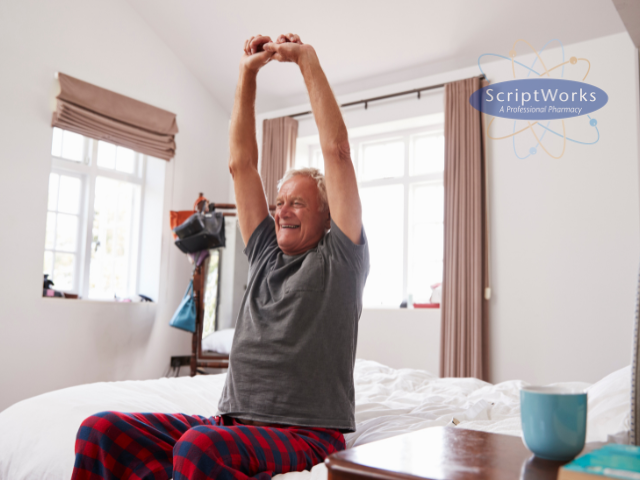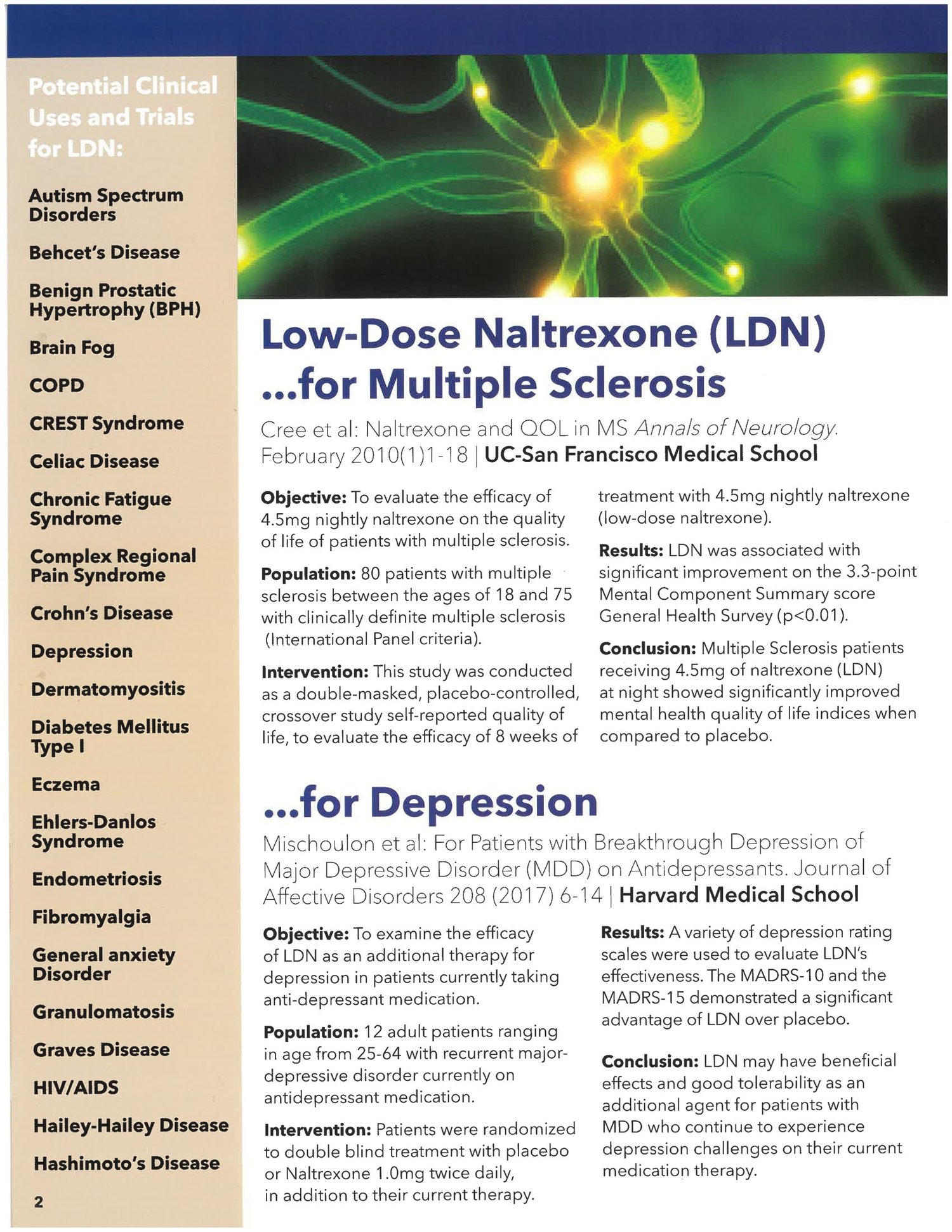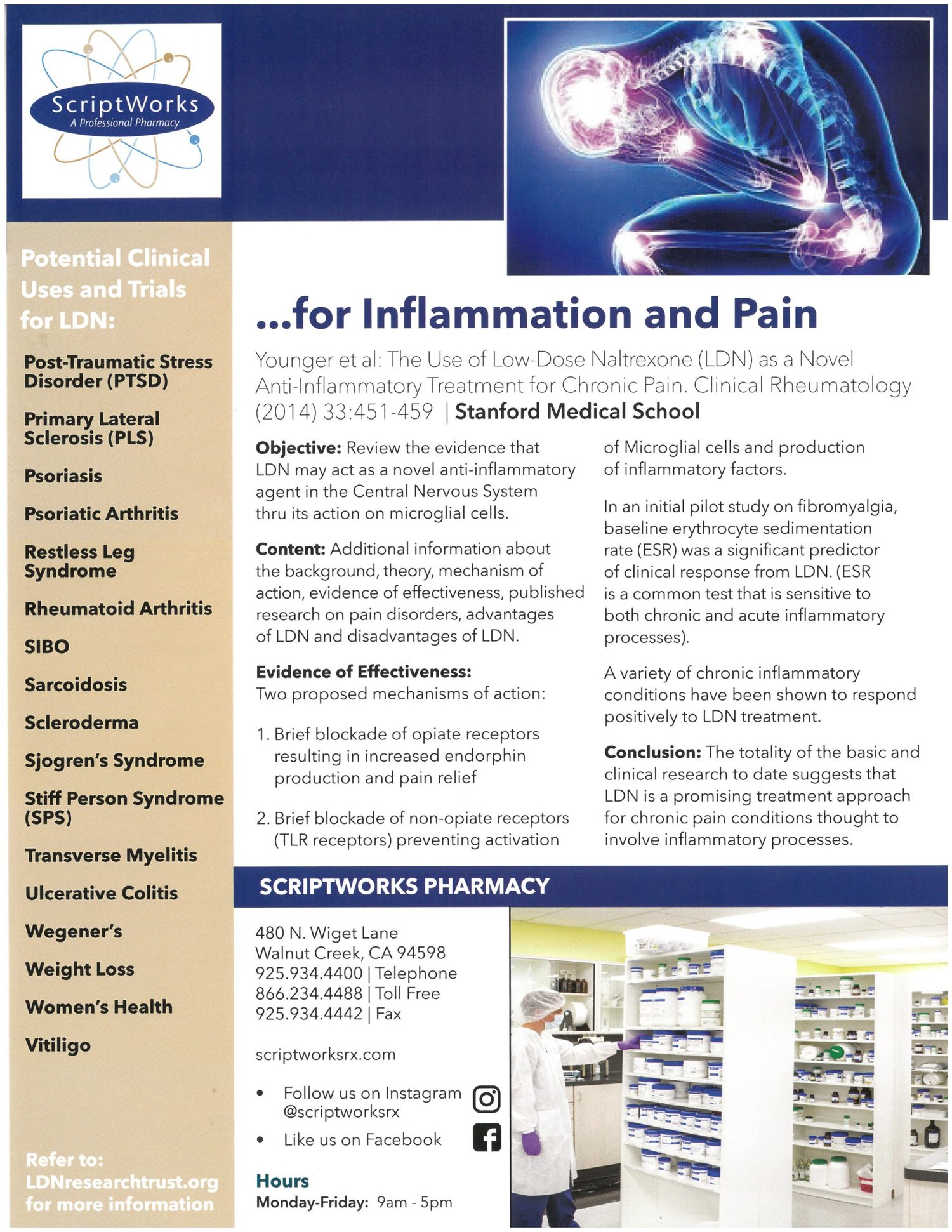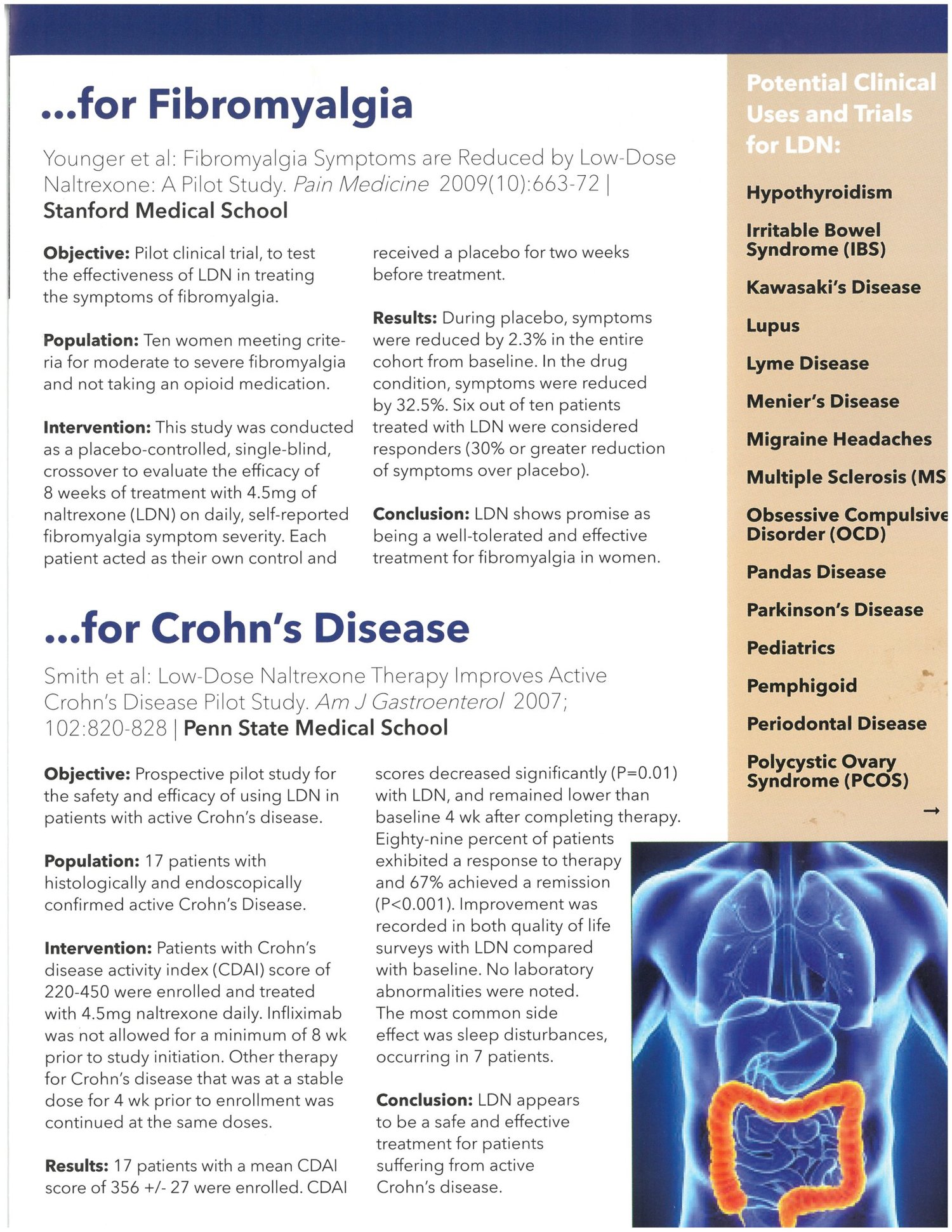
Author: Bob Brensel | President, Pharmacist | ScriptWorks
Bob Brensel, RPh, earned his Pharmacy Degree at University of the Pacific in Stockton, California in 1980. Former California Pharmacists Association’s Award Winner for Recognition of Outstanding Achievement in Compounding Pharmacy. Read More →
At ScriptWorks Pharmacy, we get tons of questions about Low Dose Naltrexone (LDN) every day. Asking questions about medications is crucial, especially for pain relief alternatives to addictive opioids. Many medical practitioners are prescribing LDN for their patients, learn about the most commonly asked questions about the compound.
What is Low Dose Naltrexone (LDN)?

Naltrexone is an opiate receptor antagonist. While the 50-mg dose of naltrexone was approved by the FDA for opioid and alcohol addiction in 1984, researchers discovered that much lower doses may help patients and providers address autoimmune diseases, chronic pain, mental health issues, and inflammation. The potential benefits of Low Dose Naltrexone in these areas have gained widespread attention recently.
Potential Benefits of Low Dose Naltrexone
Low Dose Naltrexone may help patients address the following conditions and issues:
- Chronic pain
- Arthritis
- Ulcerative Colitis
- Eczema
- Inflammation
- Celiac disease
- Lupus
- HIV/Aids
- Animals
- Hashimoto’s
- Graves’ disease
- Crohn’s Disease
- Neuroinflammation
- Multiple Sclerosis
- Autism
- Traumatic Brain Injury (TBI)
- Lyme Disease
- Parkinson’s disease
- Alzheimer’s
- Psoriasis
- Sjogren’s Syndrome
- Irritable bowel
- Fibromyalgia
- Cancer
- Weight Loss
What is the Appropriate Dose of LDN?
We advise starting LDN titration slowly, as some patients find their optimal response at doses lower than the commonly mentioned 4.5 mg. Using our unique LDN Starter Kit, the side effects become potentially minimal or non-existent with a gradual dose increase. This requires collaboration between an experienced pharmacist and physician to find the right dose for each condition. Some patients experience full pain relief at 3 mg and need to stop there, as increasing the dose further can reduce effectiveness.
Physicians are typically aware of the standard dosing, but in recent years, dosing has expanded. For patients on chronic opioid therapy, doses can start as low as 0.001 mg (1 mcg), with some finding relief at just 0.002 mg (2 mcg) daily. Titrating too quickly can lead to missing positive results, so it’s important to start lower depending on the condition. Working with a knowledgeable pharmacy like ScriptWorks ensures proper titration protocols for both ultra-low and very-low doses of naltrexone.
Can Narcotic Pain Relievers be Used While on LDN?
A common question is whether narcotic pain relievers can be used with LDN. The answer is no.
LDN blocks the effects of narcotics, which can cause withdrawal symptoms if there’s any degree of narcotic dependence. Careful consideration is needed before starting LDN, and we work with pain management specialists to wean patients off narcotic analgesics while starting LDN therapy.
Why is LDN More Commonly Available as a Compounded Medication?
Commercially available naltrexone is only provided in a 50-mg tablet, but LDN therapy typically requires doses from 0.5 mg to 4.5 mg per day, adjusted based on the patient’s response. Compounding pharmacies use naltrexone powder from FDA-approved facilities to create individualized doses based on prescription orders. Prescribers should ensure the compounding facility is accredited.
What are the Potential Side Effects of LDN?
Side effects of LDN are rare and usually mild. The most commonly reported side effects include:
- Vivid dreams: Common, usually lasting a few days. If bothersome, the dosing time can be adjusted.
- Stomach cramps/diarrhea: Rare.
- Increased thyroid sensitivity: May require medication adjustment.
- Flu-like symptoms: If symptoms last longer than 24 hours, the dose may need to be reduced until they resolve.
Side effects of LDN are rare and usually mild. The most commonly reported side effects include:
- Vivid dreams: Common, usually lasting a few days. If bothersome, the dosing time can be adjusted.
- Stomach cramps/diarrhea: Rare.
- Increased thyroid sensitivity: May require medication adjustment.
- Flu-like symptoms: If symptoms last longer than 24 hours, the dose may need to be reduced until they resolve.


ScriptWorks and Low Dose Naltrexone
ScriptWorks Pharmacy in the East Bay has dedicated countless hours to researching, teaching, and collaborating with healthcare professionals on compounded medications. We’ve helped many patients manage chronic pain, carefully compounding LDN for patients.
For more information, contact ScriptWorks Pharmacy or ask your healthcare provider about the potential benefits of Low Dose Naltrexone for your specific needs.





